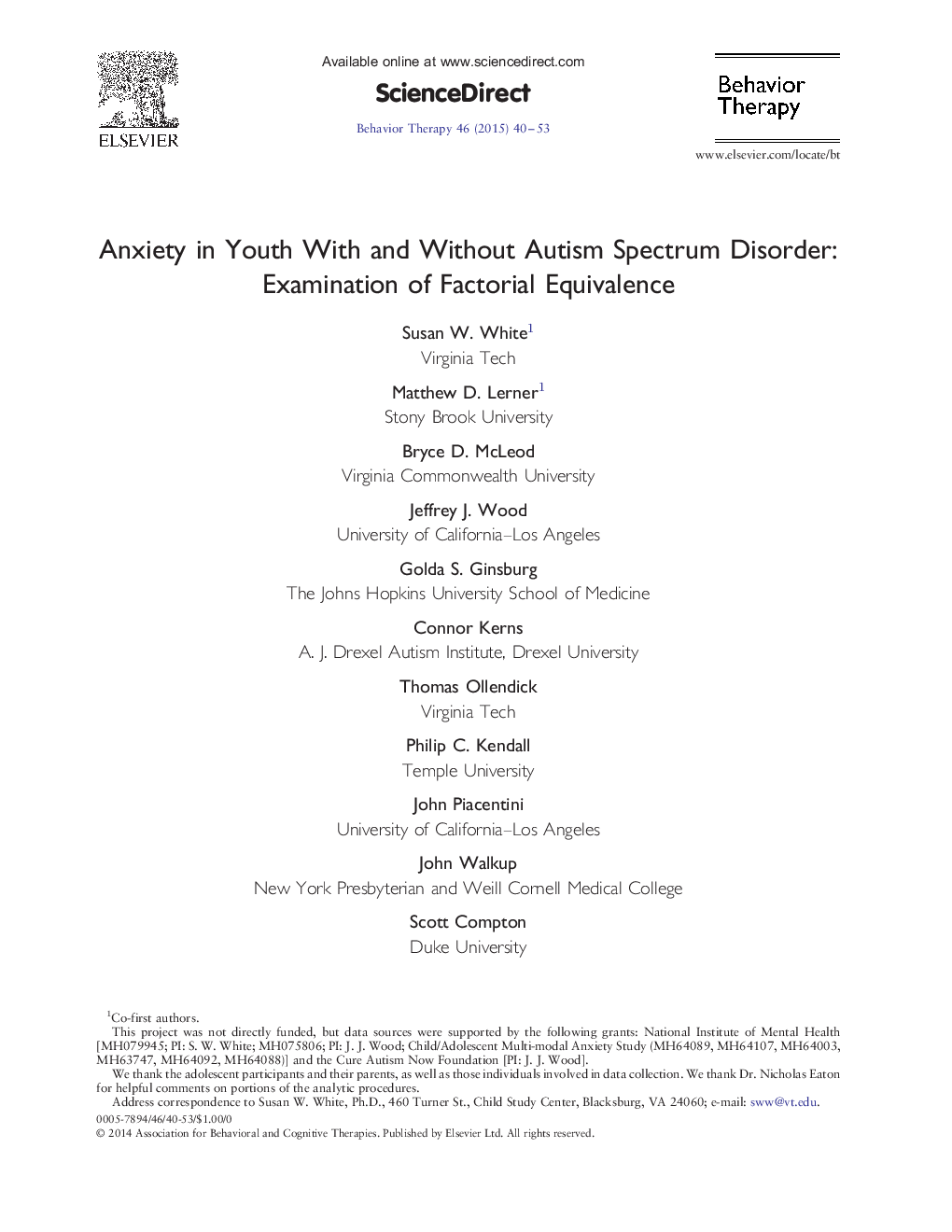| کد مقاله | کد نشریه | سال انتشار | مقاله انگلیسی | نسخه تمام متن |
|---|---|---|---|---|
| 901198 | 915851 | 2015 | 14 صفحه PDF | دانلود رایگان |
• Equivalent latent factors are apparent across youth with and without autism spectrum disorders who also have clinical anxiety disorders, based on youth self-report MASC data.
• Parent-reported MASC data, from our gender-matched typically developing sample, did not conform to the established structure of the instrument, prohibiting between-group fit comparison.
• Anxiety may manifest differently in youth with ASD. As such, caution should be taken in interpreting MASC scores, from child- or parent-report, in youth who have ASD.
Although anxiety is frequently reported among children and adolescents with autism spectrum disorder (ASD), it has not been established that the manifest symptoms of anxiety in the context of ASD are the same as those seen in youth without ASD. This study sought to examine the metric and latent factor equivalence of anxiety as measured by the Multidimensional Anxiety Scale for Children, parent-report (MASC-P) and child-report (MASC-C), in youth with anxiety disorders and ASD with intact verbal ability (n = 109, Mage = 11.67 years, 99 male) and a gender-matched comparison group of typically developing (TD) children and adolescents with anxiety disorders but without ASD (n = 342, Mage = 11.25 years, 246 male). Multigroup factorial invariance (MFI) using structural equation modeling indicated equivalent latent factors in youth with and without ASD on the MASC-C (metric invariance). However, the item means and covariances along with the relations among the factor scores were different for the youth with ASD (i.e., lack of evidence for scalar or structural invariance). The MASC-P data did not fit the measure’s established structure for either the ASD or TD group, and post-hoc exploratory factor analysis revealed a different factor structure in the ASD group. Findings suggest that the MASC-C may not measure identical constructs in anxious youth with and without ASD. Further research on the structure of the MASC in clinical samples is warranted.
Journal: Behavior Therapy - Volume 46, Issue 1, January 2015, Pages 40–53
